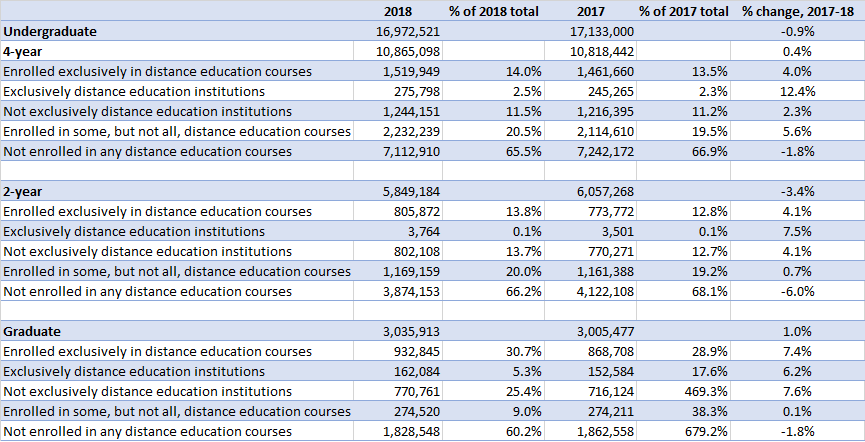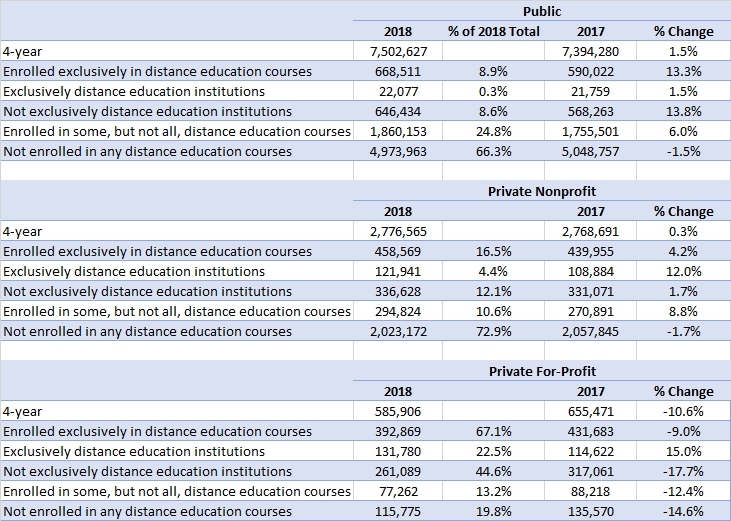You have /5 articles left.
Sign up for a free account or log in.

istock.com/z_wei
The proportion of all enrolled college students who took at least one online class continues to rise, edging up to 34.7 percent in fall 2018 from 33.1 percent the previous year. The rate of increase appears to be slowing ever so slightly, although online education remains the main driver of growth in postsecondary enrollments.
These are among the conclusions one might glean from the latest federal data on distance education enrollments, drawn from the Education Department's Integrated Postsecondary Education Data System.
The data generally show more students studying online, at virtually all types of institutions and at all levels of post-high school learning. The table below shows the basic trends:
- Overall enrollment at institutions that receive federal financial aid dropped by 1.1 percent from 2016 to 2018, reflecting the continued strength of the job market and declines in the number of young people of traditional college age.
- The number of students taking at least one online course grew from 31.1 percent in 2016 to 33.1 percent in 2017 and 34.7 percent in 2018. The fact that the rate of growth was 1.6 percent from 2017 to 2018 compared to 2 percent from 2016 to 2017 could suggest a slowing, as the analyst Phil Hill suggests, "at least for some DE categories."
- The roughly 275,000-student growth in online enrollment comes slightly more from those who are studying exclusively online (an increase of about 155,000) than from those who are taking some but not all of their classes online (about 125,000).
Looking more closely at education levels, the data show that graduate students are the most likely to take at least some of their courses online (nearly 40 percent do), followed by four-year (34.5 percent) and two-year undergraduates (33.8 percent), as evident in the tables below.
The least likely of all to study online are the 250,000 or so students the Education Department characterizes as enrolled in "less-than-two-year" programs, only 1 percent of whom take online courses.

Analyzing the data by sector offers more insights. The set of tables below show that four-year undergraduates at private nonprofit colleges are significantly less likely than their public college peers (and even more so than their for-profit college counterparts) to be enrolled online.
And while a smaller proportion of undergraduates at private, nonprofit institutions study exclusively online, as might be expected, of those who do, a greater proportion do so at institutions defined as "exclusively distance education institutions" -- attributable in large part to the growing enrollment of Western Governors University, and to a lesser extent to Excelsior College.







